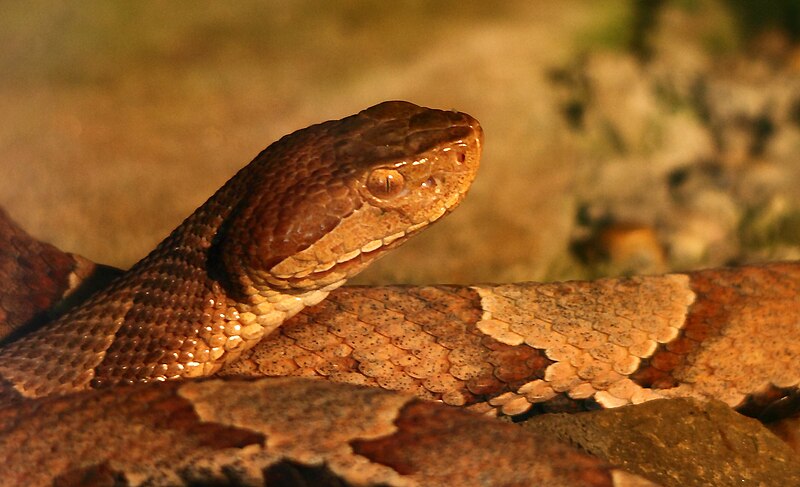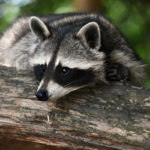Yes, copperhead snakes are venomous, but their bites are rarely fatal to humans.
Hey there, nature enthusiasts and curious minds! If you’ve ever found yourself wondering about those slithery serpents lurking in the wild, specifically copperhead snakes, you’re in the right place.
Copperhead snakes are a common topic of concern, especially if you live in areas where they roam. Are these snakes venomous? Should you be worried about a bite? Well, let’s dive right into it.
Copperhead snakes, with their distinctive hourglass pattern and reddish-brown hues, are fascinating creatures. They can be found in various habitats, from wooded areas to rocky hillsides. But what really grabs attention is the question of their venom.
Yes, copperhead snakes are indeed venomous, but there’s more to the story than just that. Their bites, while painful, are rarely fatal to humans. So, before you panic at the sight of one, let’s explore what makes these snakes tick and how you can stay safe around them.
Key Takeaways:
- Copperhead snakes are venomous.
- Bites are rarely fatal to humans.
- Recognizing copperheads and understanding their behavior can prevent bites.
Understanding Copperhead Snakes
Let’s take a closer look at the fascinating world of copperhead snakes. Understanding these creatures can help alleviate some of the fear and mystery surrounding them. So, let’s get to know our slithery friends a bit better.
Description: Copperhead snakes are easily recognizable thanks to their distinctive appearance. They boast a beautiful, coppery-brown color with a pattern of hourglass-shaped bands along their bodies. Typically, they grow to be about 2 to 3 feet long, making them relatively small compared to some of their snake cousins. Their broad, triangular heads and vertical pupils are key features that distinguish them from non-venomous snakes.
Habitat: Where do these snakes like to hang out? Copperheads are quite adaptable and can be found in a variety of environments. They thrive in wooded areas, forests, and even in rocky hillsides. You might also spot them near streams, rivers, or in abandoned buildings and debris piles. Basically, anywhere they can find cover and a good supply of prey, copperheads are likely to be nearby.
Behavior: Despite their somewhat fearsome reputation, copperheads are not aggressive by nature. They prefer to stay hidden and avoid confrontation. When threatened, a copperhead’s first line of defense is to freeze and rely on its camouflage to blend into its surroundings. If that doesn’t work, they might vibrate their tails as a warning, mimicking the sound of a rattlesnake. Biting is usually their last resort, so as long as you give them space, they’re more than happy to leave you alone.
Venom and Its Effects
Alright, let’s talk about the part that probably brought you here: the venom. Copperhead snakes might be venomous, but there’s a lot more to understand about their bite and its effects. So, let’s unravel the mystery of their venom.
Venom Composition: Copperhead venom is a complex cocktail of proteins and enzymes designed to immobilize prey and start the digestion process. It’s not the most potent venom in the snake world, but it’s certainly effective. The venom primarily targets the circulatory system, causing local tissue damage and pain, which is enough to make any predator think twice before messing with a copperhead.
Bite Symptoms: If a copperhead does bite, what can you expect? The symptoms typically start with immediate pain at the bite site, which can range from mild to intense. Swelling and redness usually follow, spreading from the bite area. You might also experience nausea, a sense of tingling or numbness, and even some difficulty breathing in severe cases. It’s important to remember that reactions can vary from person to person.
Severity: While the bite of a copperhead is definitely something to take seriously, it’s rarely life-threatening to humans. Most bites occur when people accidentally step on or provoke the snake. Thanks to modern medical care, fatalities from copperhead bites are extremely rare. That said, the bite can still be quite painful and may require medical attention, especially for young children, the elderly, or individuals with compromised immune systems.
What to Do If Bitten
So, what should you do if you find yourself bitten by a copperhead snake? While it’s a situation no one wants to be in, knowing the right steps can make a significant difference. Here’s a guide to help you stay calm and handle the situation effectively.
Immediate Actions: First things first: don’t panic. Easier said than done, right? But staying calm is crucial. Try to move away from the snake to avoid any additional bites. Then, focus on keeping the affected limb immobilized and at or slightly below heart level to slow the spread of venom. Remove any tight clothing or jewelry near the bite site, as swelling is likely to occur.
Medical Treatment: It’s essential to seek medical attention as quickly as possible. Call 911 or get to the nearest emergency room. Describe the snake to medical personnel, but do not attempt to capture or kill it. Medical professionals will need to know that it was a copperhead bite, but they don’t need the actual snake. Treatment usually involves monitoring for severe reactions and managing symptoms, such as pain and swelling. In some cases, antivenom may be administered, but this is typically reserved for more severe bites.
Long-term Effects: Most people recover fully from copperhead bites, especially with prompt medical care. However, some may experience lingering effects such as pain, stiffness, or mild scarring at the bite site. Follow-up care is important to ensure proper healing and to address any complications that might arise. Physical therapy might be recommended if the bite impacts mobility or muscle function.
Knowing these steps can help you react swiftly and effectively if bitten by a copperhead snake. Remember, the key is to stay calm, seek medical help, and follow professional advice. Now, let’s explore how to prevent copperhead bites in the first place, so you can enjoy the great outdoors with peace of mind.
Preventing Copperhead Bites
Prevention is always better than cure, especially when it comes to snake bites. Knowing how to avoid encounters with copperhead snakes can help you stay safe while enjoying the great outdoors. Here are some practical tips to keep those slithery surprises at bay.
Avoiding Habitats: Copperheads love to hide in leaf litter, tall grass, and under rocks or logs. When hiking or working in such areas, stay on well-worn paths and avoid stepping into tall grass or piles of leaves. If you’re exploring rocky terrain, be cautious about where you place your hands and feet. Copperheads are masters of camouflage, so it’s easy to overlook them.
Safety Measures: When venturing into copperhead territory, it’s smart to take some safety measures. Use a walking stick to probe the ground ahead of you, giving any hidden snakes a chance to move away. Stay alert and be mindful of your surroundings. If you see a copperhead, give it plenty of space and do not attempt to handle it. Most snake bites occur when people try to move or kill the snake.
What to Wear: Proper attire can make a big difference. Wear thick boots and long pants when hiking through snake-prone areas. This not only protects your legs but also reduces the chances of a snake bite penetrating your skin. Leather gloves are a good idea if you’re doing yard work or handling debris where snakes might be hiding.
Myths and Misconceptions
When it comes to copperhead snakes, myths and misconceptions abound. Let’s clear up some of the most common ones so you can separate fact from fiction and understand these snakes a little better.
Common Myths: One popular myth is that baby copperheads are more dangerous than adults because they can’t control their venom. While it’s true that baby copperheads are venomous, their bites are not more dangerous than those of adult snakes. In fact, adults have more venom and a better delivery system.
Another myth is that copperheads always travel in pairs. This is simply not true. Copperhead snakes are solitary creatures, and while you might occasionally find more than one in the same area, it’s not because they are traveling together.
Facts vs. Fiction: Many people believe that copperheads are aggressive and will chase after humans. This is a big misconception. Copperheads are actually quite shy and prefer to avoid confrontation. They rely on their camouflage to stay hidden and will only bite as a last resort when they feel threatened.
There’s also a common belief that all reddish-brown snakes are copperheads. This is not the case. Several non-venomous snakes, like the northern water snake, have similar coloring and patterns. It’s important to accurately identify snakes rather than assuming any reddish-brown snake is a copperhead.
By debunking these myths and focusing on the facts, we can better understand copperhead snakes and reduce unnecessary fear. Remember, copperheads are not out to get us; they’re simply trying to survive like any other animal. Now, let’s explore how we can coexist with copperheads safely and respectfully.
Coexisting with Copperheads
Living alongside copperhead snakes doesn’t have to be a nightmare. With a little knowledge and respect for these reptiles, we can peacefully coexist with them. Here’s how you can ensure a harmonious relationship with copperheads in your environment.
Environmental Role: Copperhead snakes play a vital role in the ecosystem. They help control the populations of rodents and other small animals, which can prevent the spread of diseases and reduce crop damage. By keeping these prey populations in check, copperheads contribute to a balanced and healthy ecosystem. Understanding their role can help us appreciate their presence rather than fear it.
Respect and Awareness: Respecting copperheads starts with awareness. Know where they’re likely to be and take precautions when you’re in those areas. If you encounter a copperhead, don’t panic. Remember that they’re more interested in avoiding you than engaging. Give them space to retreat, and avoid making sudden movements that could provoke them. Teaching children and others in your community about these practices can help spread awareness and reduce unnecessary snake confrontations.
Educating Others: Education is key to peaceful coexistence. Share your knowledge about copperhead snakes with friends, family, and neighbors. The more people understand about these snakes, the less likely they are to react with fear and aggression. Consider organizing community workshops or school presentations to spread the word about snake safety and the ecological importance of copperheads.
By embracing these practices, we can live alongside copperhead snakes without conflict. It’s all about understanding their behavior, respecting their space, and educating others. With these steps, we can appreciate the important role copperheads play in our world and coexist with them safely.
That wraps up our in-depth look at copperhead snakes. While these venomous snakes might seem intimidating at first, understanding them helps demystify their presence and allows us to respect their place in the ecosystem. Stay safe, stay informed, and remember: knowledge is the best tool for coexistence.
Conclusion
In wrapping up, we’ve journeyed through the intriguing world of copperhead snakes, uncovering the truth about their venom, understanding their behavior, and learning how to coexist with them safely. Copperhead snakes, while venomous, are not the monsters they’re often made out to be. With their beautiful patterns and crucial role in maintaining the balance of nature, these snakes deserve our respect and understanding.
Remember, copperheads prefer to avoid humans and only bite when they feel threatened. By recognizing their habitats, taking preventive measures, and knowing how to respond if bitten, we can significantly reduce the risk of a negative encounter. Debunking myths and spreading accurate information is essential in fostering a healthy respect for these creatures.
So, the next time you find yourself hiking through the woods or working in your garden, take a moment to appreciate the copperhead snake’s role in our ecosystem. With the right knowledge and attitude, we can coexist with these fascinating reptiles and continue to enjoy the great outdoors safely. Stay curious, stay informed, and always respect the wildlife that shares our world.














